Exodoxus, Aristoteles, Alpine Valley
and
Notes on Tone Mapping
with the
Orion 10" f/3.9 Newtonian Astrograph
June 13, 2016
Uploaded 7/16/16
 Note: Conventional usage of South is up in all images, more info below.
Photo KEY:
Note: Conventional usage of South is up in all images, more info below.
Photo KEY:
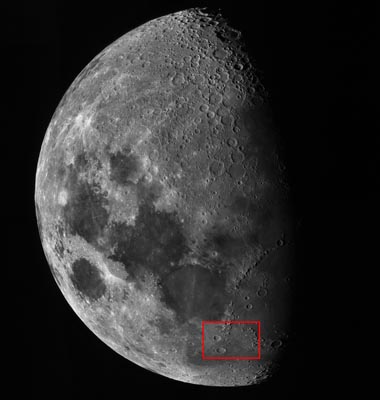
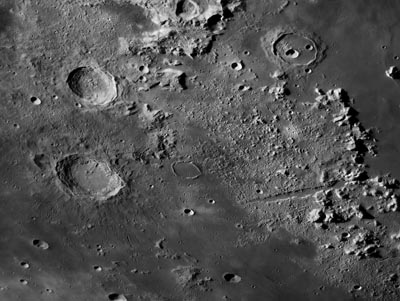
|
This is one of the very best images from the
evening, when the seeing was at its peak. Fine
sub arc second sized details can be seen across
the entire frame.
Select size for enlarged view:
1400 x 1200
|
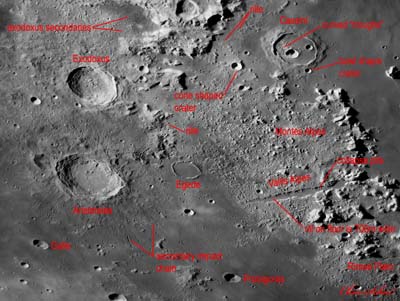
|
Here are some selected details
Select size for enlarged view:
1400 x 1200
|
| Here
are a few examples of "Tone Mapping" on the lunar full
disk taken on the 16th a few days later from the above image.
On the left is a normal image, with the gamma set for the nominal
100, and the histogram stretched from full black to full white
for all data. On the right the same image has been contrast stretched
in the normal fashion in an attempt to show more detail in the
dark Mare, and hopefully ray and fine crater features. Its a
mess! You cant achieve the essential details without severely
white clipping the data. |
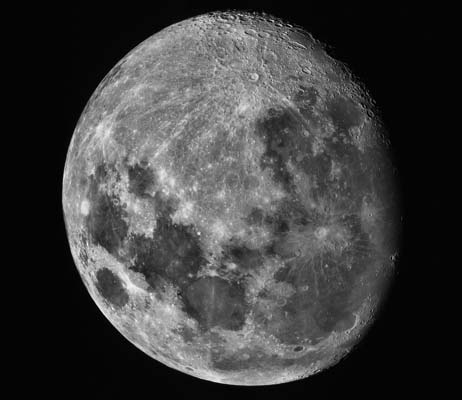
|
Next we tone map
the data with Image J. The result is at left here. This does
exactly what we
want to do - reveal the crater rays, fine maria shadings and
retain all levels of original data without loosing it through
white or black clipping. This image has not been sharpened.
|
| Comparing
the two images at a larger scale reveals the enormous increase
in detail visible after tone mapping. Sure - you can shoot an
image like the one on the left any time, and get a shot that
is just like any other moon shot taken over the last hundred
years. OR you can apply the advanced tone mapping algorithms
available today and see ten times the features and detail in
the same image data. The choice is yours! |
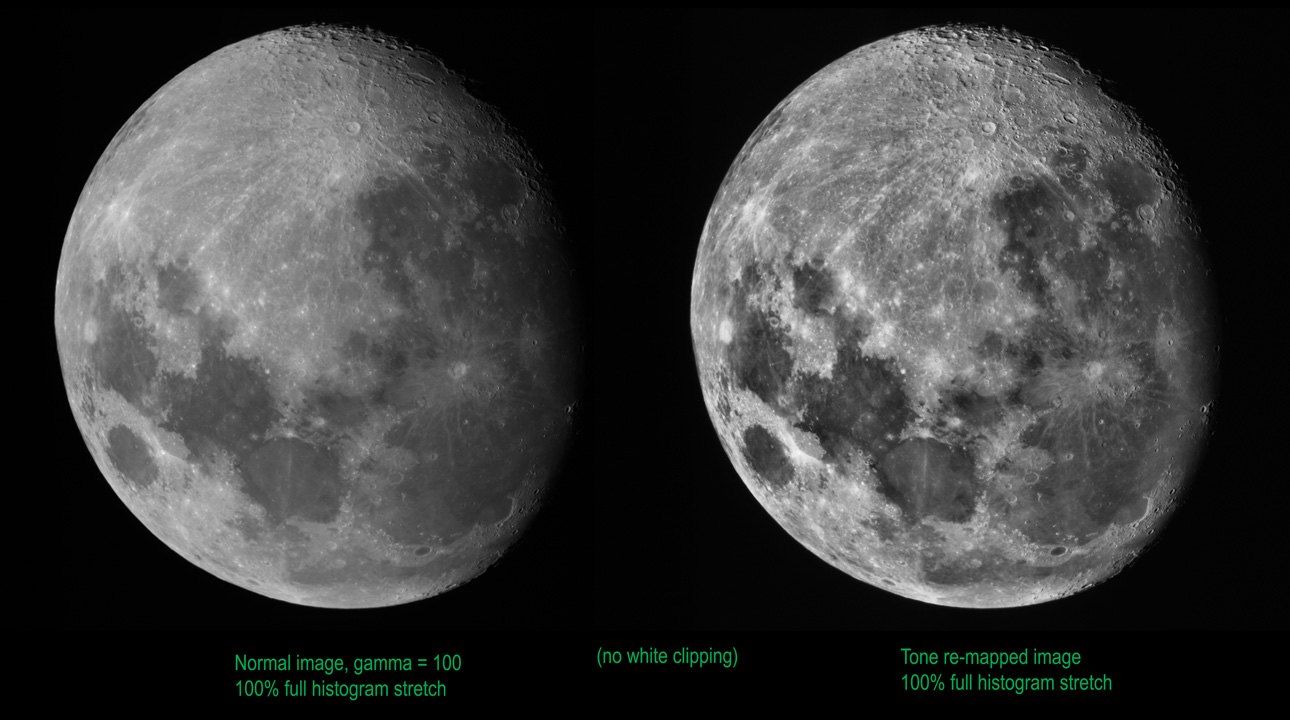
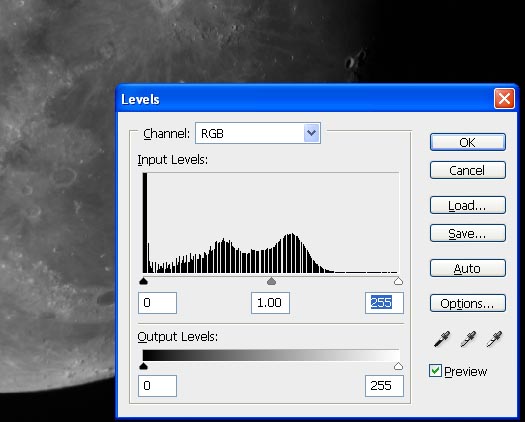 Here is the original conventionally stretched image with its histogram.
You can see we are displaying all the data from black to white
and yet the image is the "normal" flat low contrast lunar disk.
Here is the original conventionally stretched image with its histogram.
You can see we are displaying all the data from black to white
and yet the image is the "normal" flat low contrast lunar disk.
|
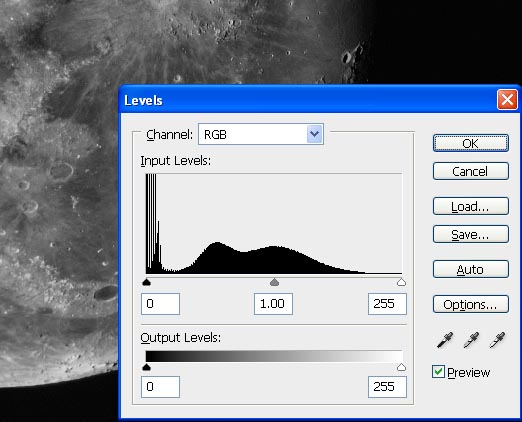 Now after applying Tone Mapping with Image J to our original data,
the histogram is stretched again to keep all data within the bounds of
total black (0) to Pure white (255) for this 8 bit image. Yet look how
magnificently we render the lunar details.
Now after applying Tone Mapping with Image J to our original data,
the histogram is stretched again to keep all data within the bounds of
total black (0) to Pure white (255) for this 8 bit image. Yet look how
magnificently we render the lunar details.
|

|
To see the final image at full screen, select the
enlarged image size below:
1600 x 1290
This is a 2 part panorama with the 10 inch
at prime focus.
Conclusions. You can see the huge potential for
getting the best detail from your lunar shots is now
possible, and applying it to the Barlow high magnification
images shows a similar enhancement bringing to light elusive
hardly there features that have challenged imagers in the past!
|
| Processing:
25/1200 best frames, alignment in Autostakkert, USM, Levels and
Contrast Masking In Photoshop CS2 and Image J. |
Instrument: Orion (GSO) 10" f/3.9 with 5x Powermate
Platform: Astrophysics AP1200
CCD Camera: Image Source DMK 51 w/Televue 5x Powermate
Filter: Orion IR Pass
Exposure: 1/30 sec 12fps
Location: Payson, Arizona
Elevation: 5150 ft.
Sky: Seeing 4/5, Transparency 7/10
Outside Temperature: 55F
|